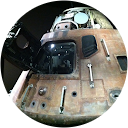We have tried many personal injury and wrongful death cases over the years, and there have been plenty of instances where we’ve asked medical experts to testify about what did or didn’t happen to the plaintiff. Jurors have enough information to process throughout a trial as it is, and expecting them to comprehend in just a few hours what might take medical professionals years to understand is asking a lot. Thanks to advancements in medically demonstrative technology, conveying information to a jury has become much more efficient.
Uses of medically demonstrative technology
In the past, expert witnesses have used anatomical models, illustrations, or photos to demonstrate medical conditions and injuries to judges and juries. Today, computer programs and applications have replaced some of those methods and offer experts more sophisticated tools for use in court.
Animation allows juries to see more accurate, real-time and to-scale representations of injuries or medical conditions. CT scans and MRIs not only offer more detailed visuals, they allow juries to see evidence of the plaintiff’s actual injuries instead of having to conceptualize them from a generic diagram or photograph. We once showed a jury an animation of how oxygenated blood moves from a mother to her baby before the baby is born. This was much easier to grasp than a static presentation with a lecture ever would have been.
For a free legal consultation, call (614) 481-6000
Applications and programs
Innovative programs and apps represent further leaps forward in medically demonstrative technology. One of the latest lets a jury view specific parts of the body in detail. An expert or attorney can pull up the application on his or her iPad and view the human body layer by layer—they can choose to display the skeleton, or the digestive system, or the nervous system, etc. It’s an excellent way to give juries a close-up look at the human body—and to keep the jury’s attention.
An expert on the witness stand explaining a nerve injury can click an image to show exactly how an injury occurred from multiple angles. The expert can show the view that a surgeon would see while operating, and illustrate (for example) where the surgeon made an error. It’s far more vivid and effective than an old-fashioned two-dimensional presentation.
If you’re thinking you’ve seen something similar on television recently, you probably have. It’s the kind of tech that CSI and other shows have used for a long time—though it’s taken longer to make its way into real-world courtrooms.
Giving expert witnesses authority
Another advantage of medically demonstrative technology is that it gives expert witnesses more authority. Equipped with medically demonstrative tech, expert witnesses become teachers who can show how something happened and why, rather than just lecturers who recite their version of an event. To a jury, a teacher who can demonstrate what happened and why is more appealing than a dry lecturer. Plus, when an expert witness projects the authority of a teacher, it’s harder for a defense attorney to accuse the expert of not being objective.
As is the case with any witness, however, there are sometimes questions of accuracy when experts use medically demonstrative technology. Judges want to know if the software program or app is correctly showing what it claims to show. As such technology becomes more commonplace, precedent can help establish its accuracy. Nevertheless, we still make sure our experts can vouch for the technology they use in each individual case. In the case of an app that creates a custom model from actual medical records, for example, we need to be sure the model is accurate and that the expert is familiar enough with the model to say so.
We also must ensure the technology presents a model clearly and accurately because we may only have one opportunity to present it to a jury. Much of the time, jurors can’t ask to see a medically demonstrative technology display again the way they can re-examine a photo or medical record that has been entered into evidence.
Click to contact our personal injury lawyers today
Personal injury or wrongful death case?
We believe it’s important to use every available tool to fight for our clients in personal injury or wrongful death cases, and medically demonstrative technology is but one of those tools. If you’ve been harmed and need legal assistance from Ohio civil litigation attorneys who work only with the best experts and tools, give us a call.
The outcome of any client’s case will depend on the particular legal and factual circumstances of the case.
Call or text (614) 481-6000 or complete a Free Case Evaluation form
















































